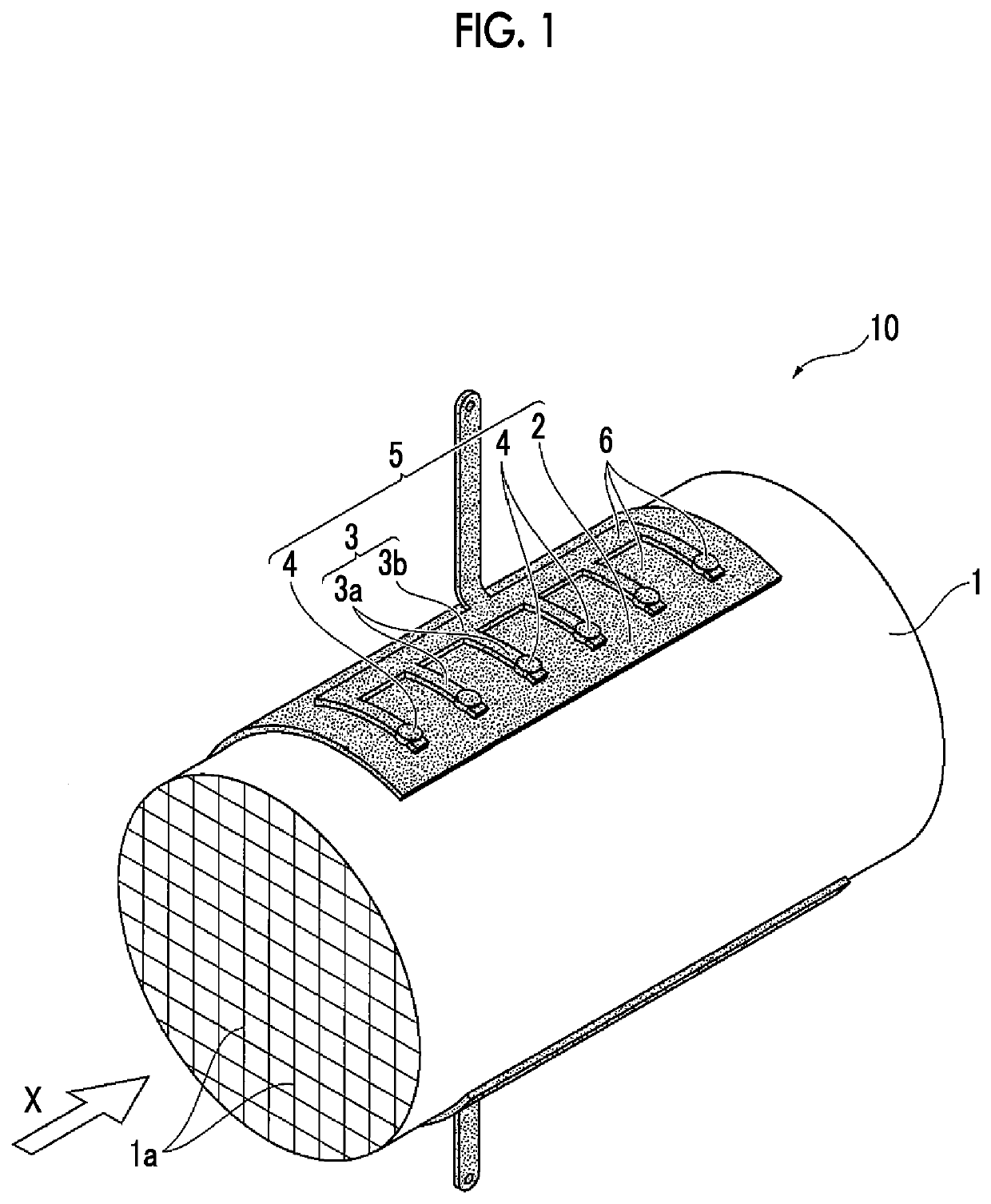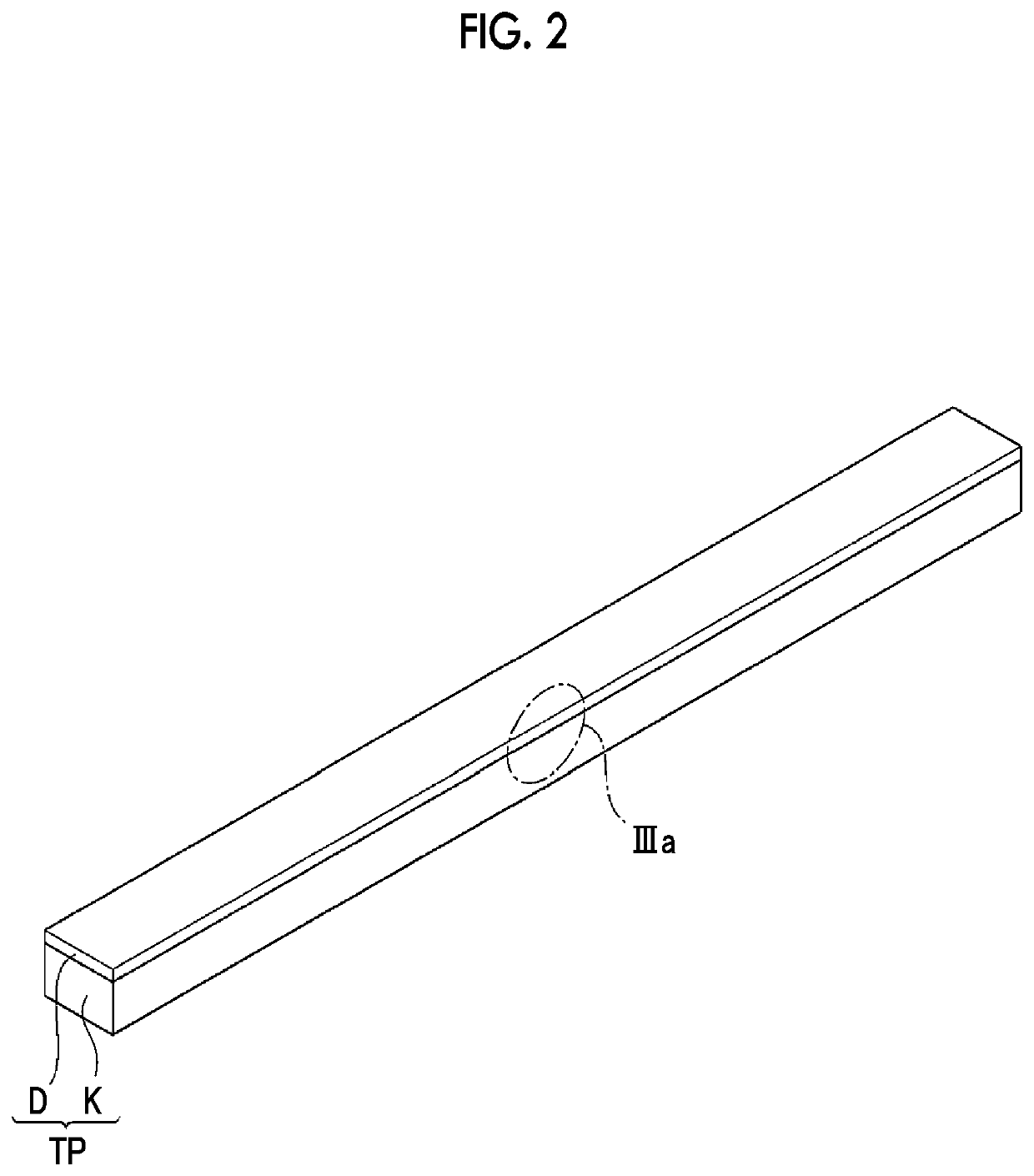Electrically heated catalytic converter and method of manufacturing the same
a catalytic converter and electric heating technology, applied in the direction of physical/chemical process catalysts, liquid/solution decomposition chemical coatings, separation processes, etc., can solve the problems of excessive hardness of protective films, deterioration of gas barrier properties of protective films, cracking of protective films, etc., and achieve excellent gas barrier properties
- Summary
- Abstract
- Description
- Claims
- Application Information
AI Technical Summary
Benefits of technology
Problems solved by technology
Method used
Image
Examples
embodiment
[0038](Embodiment of Electrically Heated Catalytic Converter and Method of Manufacturing the Same)
[0039]FIG. 1 is a schematic diagram showing an embodiment of an electrically heated catalytic converter (EHC) according to the disclosure. An electrically heated catalytic converter 10 shown in the drawing is incorporated into an exhaust system for exhaust gas. Specifically, in the exhaust system, an engine (not shown), the electrically heated catalytic converter (EHC) 10, a three-way catalytic converter (not shown), a sub muffler (not shown), and a main muffler (not shown) are disposed in this order and are connected to each other through a system pipe. When the engine starts, a noble metal catalyst constituting the electrically heated catalytic converter 10 is heated to a predetermined temperature as soon as possible, exhaust gas flowing from the engine is purified by the noble metal catalyst, and a portion of the exhaust gas which is not purified by the electrically heated catalytic ...
PUM
| Property | Measurement | Unit |
|---|---|---|
| thickness | aaaaa | aaaaa |
| porosity | aaaaa | aaaaa |
| temperature | aaaaa | aaaaa |
Abstract
Description
Claims
Application Information
 Login to View More
Login to View More - R&D
- Intellectual Property
- Life Sciences
- Materials
- Tech Scout
- Unparalleled Data Quality
- Higher Quality Content
- 60% Fewer Hallucinations
Browse by: Latest US Patents, China's latest patents, Technical Efficacy Thesaurus, Application Domain, Technology Topic, Popular Technical Reports.
© 2025 PatSnap. All rights reserved.Legal|Privacy policy|Modern Slavery Act Transparency Statement|Sitemap|About US| Contact US: help@patsnap.com



